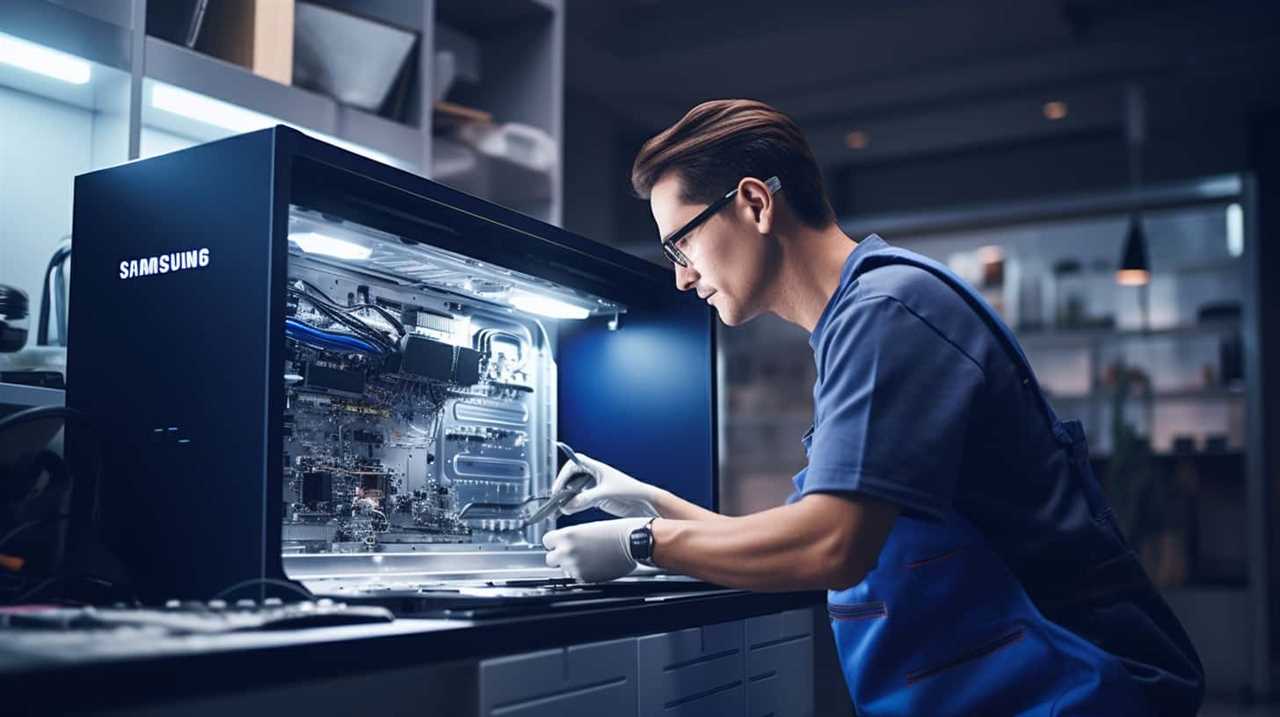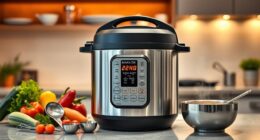Is it possible for 220v appliances to work on a 110v? This question often leads to curiosity and confusion.
In this article, we delve into the technicalities of voltage and appliance compatibility. We’ll explore the difference between 220v and 110v power supplies, the risks of using 220v appliances with lower voltage, and the limitations of voltage conversion.
For those seeking mastery in understanding and potentially modifying their appliances, this article offers concise, precise information on the topic.
Key Takeaways
- Voltage is the electrical potential difference between two points in an electrical circuit, measured in volts (V).
- Appliances are designed to operate within a specific voltage range, and if the voltage supplied is too high or too low, it can affect their performance and even damage them.
- Connecting a 220v appliance to a 110v power supply can result in reduced performance, improper functioning, or slower speed.
- Converting the voltage from 220v to 110v without proper equipment can pose serious safety risks, such as electrical fires and electrocution. It is crucial to use voltage converters specifically designed for this purpose to ensure safe operation.
Understanding Voltage and Appliance Compatibility
To understand the compatibility between appliances and voltage, we must first familiarize ourselves with the concept of voltage and how it relates to appliance functionality.

Voltage is the electrical potential difference between two points in an electrical circuit. It’s measured in volts (V) and determines the amount of electrical energy that can be transferred to an appliance.
When it comes to appliance compatibility, voltage regulation is crucial. Appliances are designed to operate within a specific voltage range, typically indicated on the appliance itself or in the user manual. If the voltage supplied to an appliance is too high or too low, it can affect its performance and even damage it.
Additionally, power consumption is directly related to voltage. Appliances with higher voltage requirements tend to consume more power.
Understanding these concepts will help us delve into the difference between 220v and 110v power supplies.

The Difference Between 220v and 110v Power Supplies
Now let’s delve into the difference between 220v and 110v power supplies and how they affect the compatibility of appliances.
The primary distinction between 220v and 110v power supplies lies in their voltage requirements. Appliances designed for 220v power supplies require a higher voltage to operate efficiently, while those designed for 110v power supplies require a lower voltage.
This difference in voltage directly impacts the performance of appliances. When a 220v appliance is connected to a 110v power supply, it receives only half the voltage it needs, resulting in reduced performance. The appliance may not function properly or may operate at a slower speed.
It’s crucial to ensure that the voltage requirements of appliances are compatible with the power supply to maintain optimal appliance performance.

Can 220v Appliances Safely Run on 110v
When considering whether 220v appliances can safely run on 110v, it’s crucial to address the potential safety risks involved. Converting the voltage from 220v to 110v without proper equipment can pose serious hazards, such as electrical fires and electrocution.
Additionally, running 220v appliances at a lower voltage may cause damage to the appliances themselves, resulting in reduced performance or even complete malfunction.
Therefore, it’s essential to use voltage converters specifically designed for this purpose to ensure the safe and proper operation of 220v appliances on a 110v power supply.
Safety Risks of Conversion
Although it’s possible to convert 220v appliances to run on 110v, there are safety risks involved in doing so. When exploring electrical hazards, it’s vital to understand voltage regulations and the potential risks associated with modifying appliances.
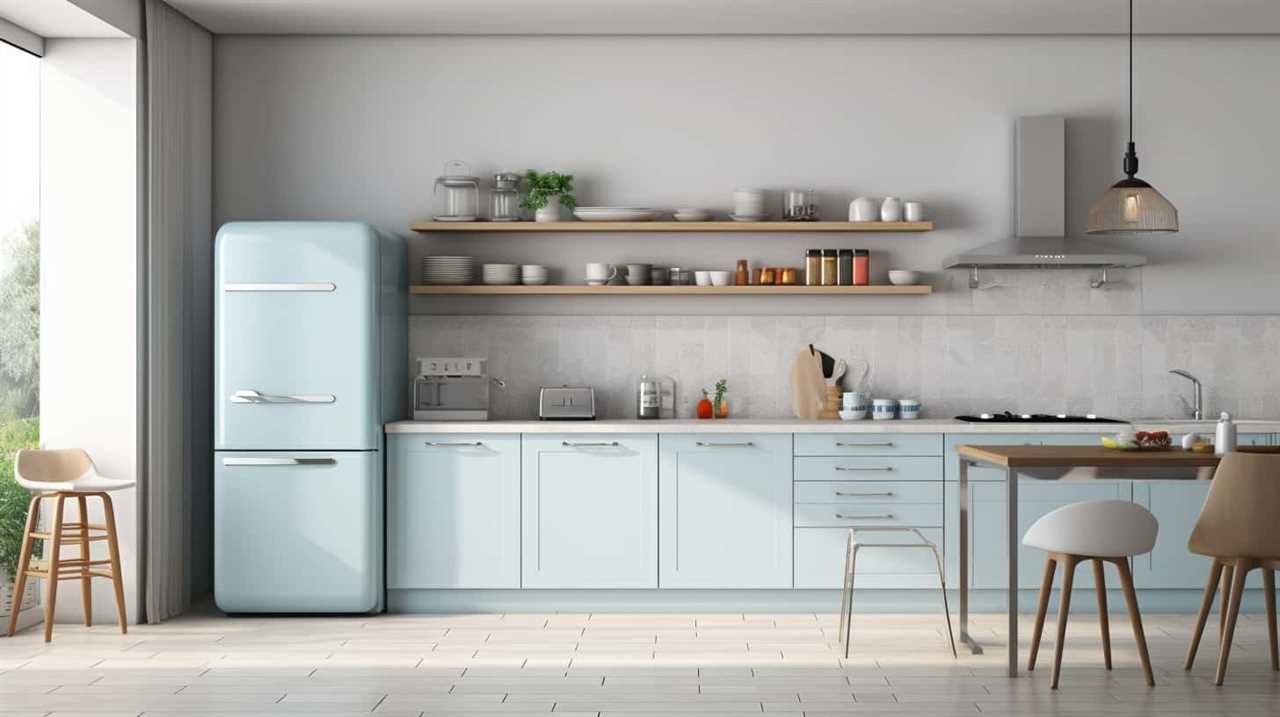
One of the main safety concerns is the increased electrical current that occurs when converting from a higher voltage to a lower voltage. This can lead to overheating and damage to the appliance, as well as increased risk of electrical shocks and fires. Additionally, the internal components of the appliance may not be designed to handle the lower voltage, leading to malfunctions and potential damage.
It’s important to consider these safety risks before attempting to convert 220v appliances to run on 110v.
Now, let’s delve into the potential damage to appliances caused by this conversion process.
Potential Damage to Appliances
Continuing our exploration of the safety risks involved in converting 220v appliances to run on 110v, let’s now examine the potential damage that can occur during this process. When attempting to power a 220v appliance with 110v, there are several potential risks and safety considerations to be aware of. The most significant risk is that the lower voltage can cause damage to the appliance, as it may not receive the necessary power to function properly. This can lead to a range of problems, including overheating, reduced performance, and even complete failure of the appliance. To better understand the potential damage that can occur, let’s take a look at the following table:
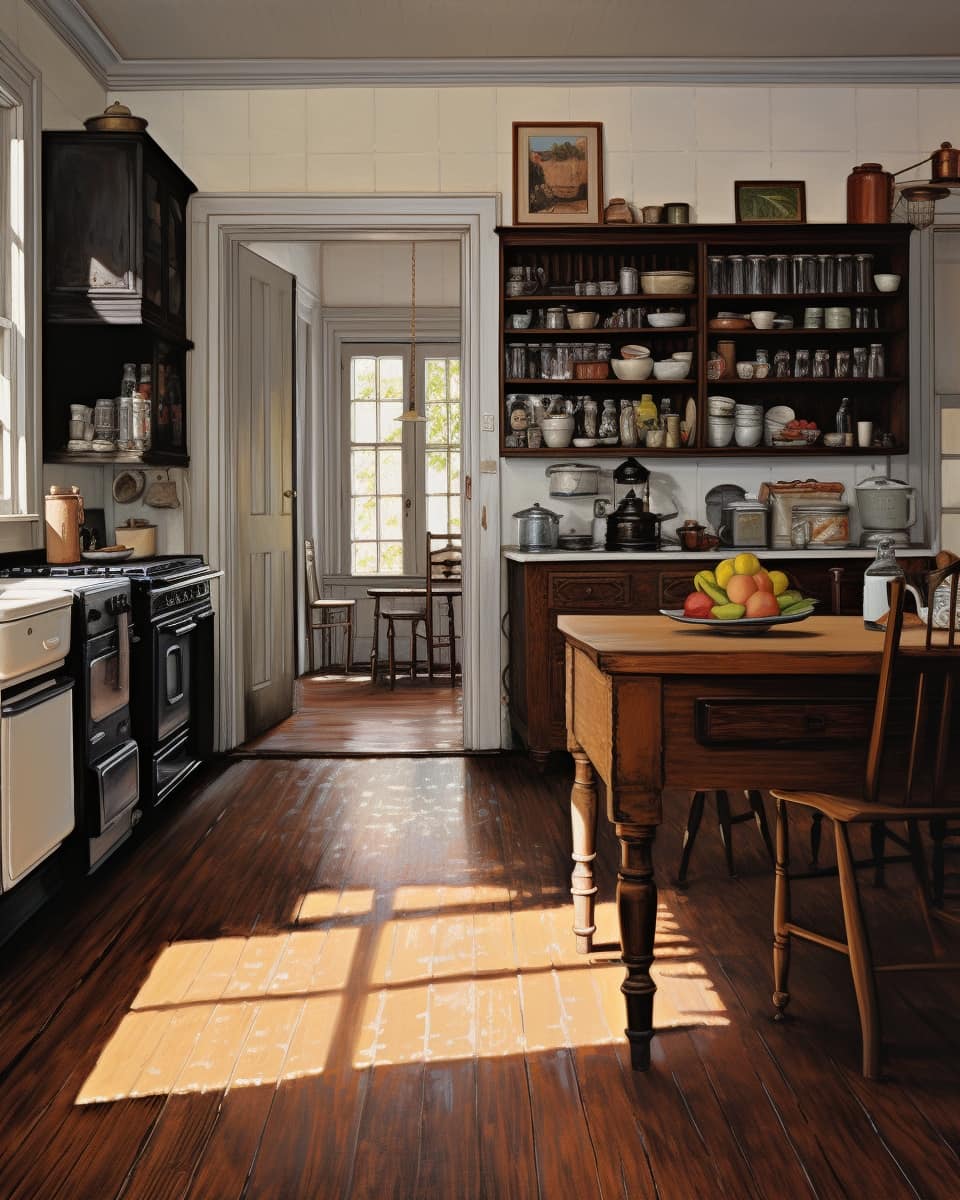
| Potential Damage | Consequences |
|---|---|
| Overheating | Increased risk of fire |
| Reduced Performance | Inefficient operation |
| Complete Failure | Appliance may be permanently damaged |
Understanding these potential risks and safety considerations is crucial in determining whether it is safe to convert a 220v appliance to run on 110v. In the next section, we will discuss the necessary voltage converters that can help mitigate these risks and ensure the safe operation of appliances.
Necessary Voltage Converters
To safely run 220v appliances on 110v, we need to use voltage converters.
When exploring voltage requirements, it’s important to understand that 220v appliances are designed to operate on higher voltage systems, whereas 110v is a lower voltage system commonly used in North America.
Voltage converters bridge this gap by transforming the incoming 110v power to the required 220v for the appliances to function properly.
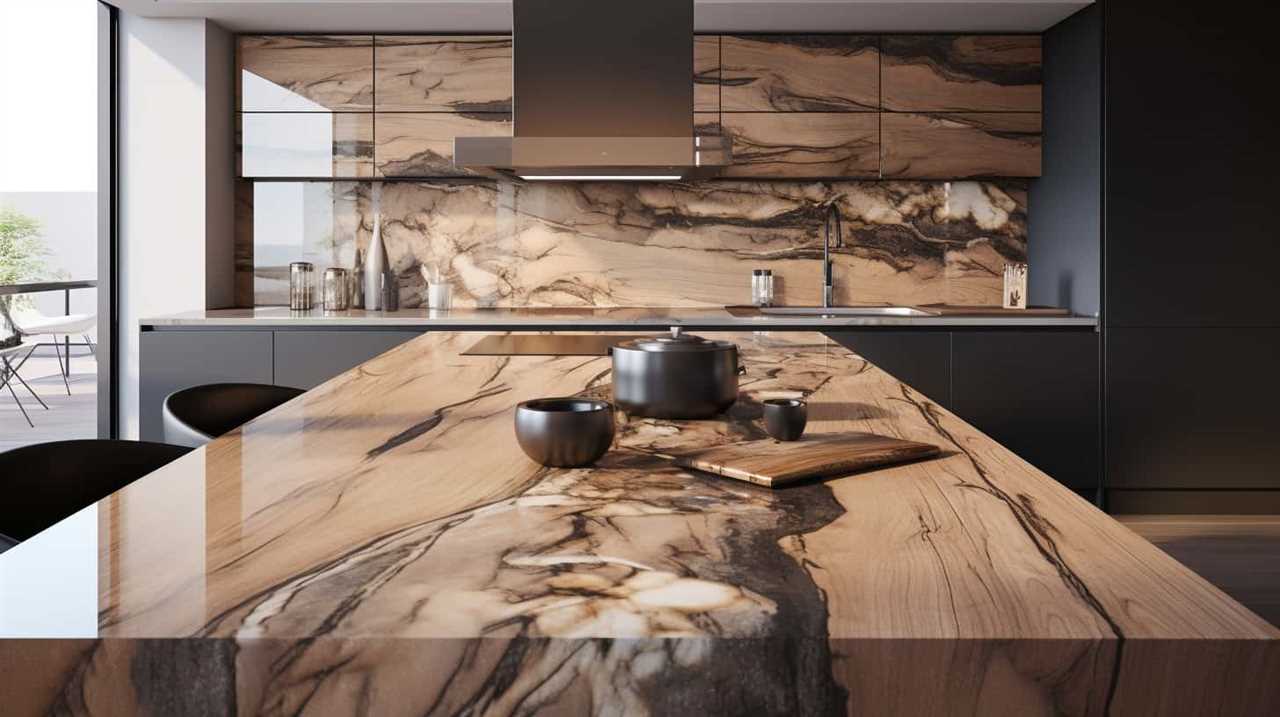
There are various voltage converter options available in the market, such as step-up transformers and voltage regulators.
Step-up transformers increase the voltage output, while voltage regulators maintain a stable voltage level.
It’s crucial to select a voltage converter that matches the power requirements of the appliance and can handle the wattage load.
Failure to do so may result in damage to the appliance or inefficient performance.
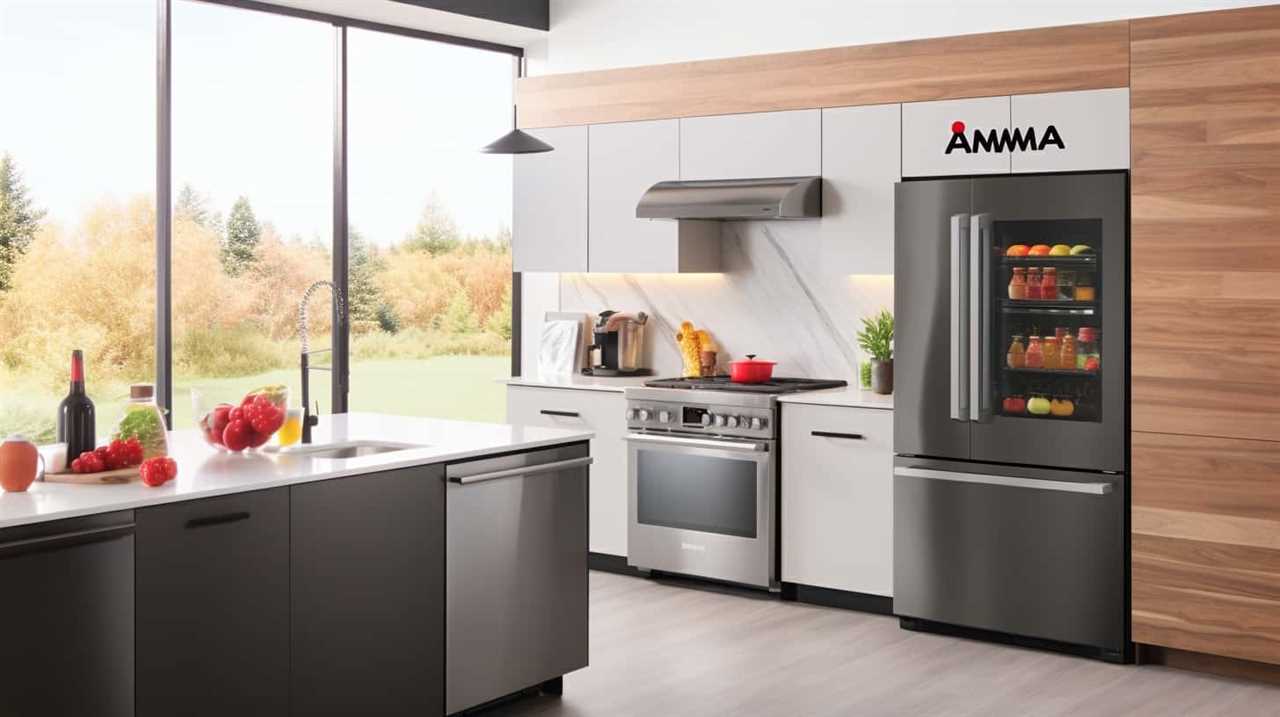
Potential Risks of Using 220v Appliances With Lower Voltage
Our research has uncovered several potential risks associated with using 220v appliances with lower voltage.
One of the main risks is the potential for electrical damage. 220v appliances are designed to operate at a specific voltage, and using them with a lower voltage can cause the electrical components to overheat and fail. This can result in permanent damage to the appliance, rendering it inoperable.
Another risk is the importance of voltage compatibility. Using a 220v appliance with lower voltage can cause it to operate at a reduced capacity, leading to decreased performance and potentially causing damage to the appliance over time. It’s crucial to ensure that the voltage requirements of the appliance match the voltage provided to prevent these risks.
Transitioning into the subsequent section, we’ll now discuss the potential dangers of overloading and damaging appliances with inadequate power supply.

Overloading and Damaging Appliances With Inadequate Power Supply
We have discovered that using inadequate power supply can lead to overloading and damaging appliances. This is a crucial aspect to consider when exploring power surges and understanding electrical current limitations.
Here are three important points to keep in mind:
- Excessive power demand: When appliances are operated on an inadequate power supply, they tend to draw more current than they’re designed for. This can overload the circuit and cause damage to the appliance.
- Voltage fluctuations: Inadequate power supply can result in voltage fluctuations, which can be harmful to appliances. These fluctuations can cause sudden spikes or drops in voltage, stressing the electrical components and leading to premature failure.
- Heat generation: Inadequate power supply can also result in excessive heat generation within the appliance. This heat can damage sensitive electronic components and lead to malfunctions or complete failure.
Understanding the potential risks of using inadequate power supply is essential for maintaining the longevity and functionality of your appliances.
Exploring Voltage Converters and Transformers
Exploring voltage converters and transformers can help us understand how 220v appliances can potentially run on 110v power supply.

When it comes to converting voltage, there are various options to consider. One option is to use a voltage converter, which is a device that converts the incoming voltage to a different level, allowing compatibility between the appliance and the power supply. These converters come in different wattage capacities, so it’s important to choose one that can handle the power requirements of the appliance.
Another option is to use a transformer, which changes the voltage level while maintaining the same frequency. Transformers are commonly used for appliances with motor-driven components, as they can handle the fluctuations in voltage without affecting the appliance’s performance.
Understanding the functionalities of these converters and transformers is crucial to ensure the safe and proper operation of 220v appliances on a 110v power supply.
How Voltage Converters Work for 220v Appliances on 110v Power
One option to consider when exploring how 220v appliances can run on 110v power is by using an appropriate voltage converter. These devices are designed to convert the voltage from the power supply to a level suitable for the appliance. Here are three key points to understand when exploring voltage converter options and understanding power supply limitations:

- Voltage converters work by stepping down the incoming voltage from 110v to 220v, allowing the appliance to operate at its required voltage.
- It’s important to select a voltage converter that matches the wattage and current requirements of the appliance to ensure proper functioning and prevent damage.
- Power supply limitations should be taken into account when using a voltage converter. It’s crucial to ensure that the power supply can provide enough current to meet the appliance’s demands.
By understanding these points, users can make informed decisions about using voltage converters to run 220v appliances on 110v power.
Transitioning into the next section, let’s now explore the use of step-up and step-down transformers for voltage conversion.
Step-Up and Step-Down Transformers for Voltage Conversion
Let’s now explore the usage of step-up and step-down transformers for voltage conversion. These transformers are essential devices that allow us to convert the voltage of electrical appliances to match the power supply.
A step-up transformer increases the voltage from a lower level to a higher one, while a step-down transformer does the opposite, reducing the voltage from a higher level to a lower one.
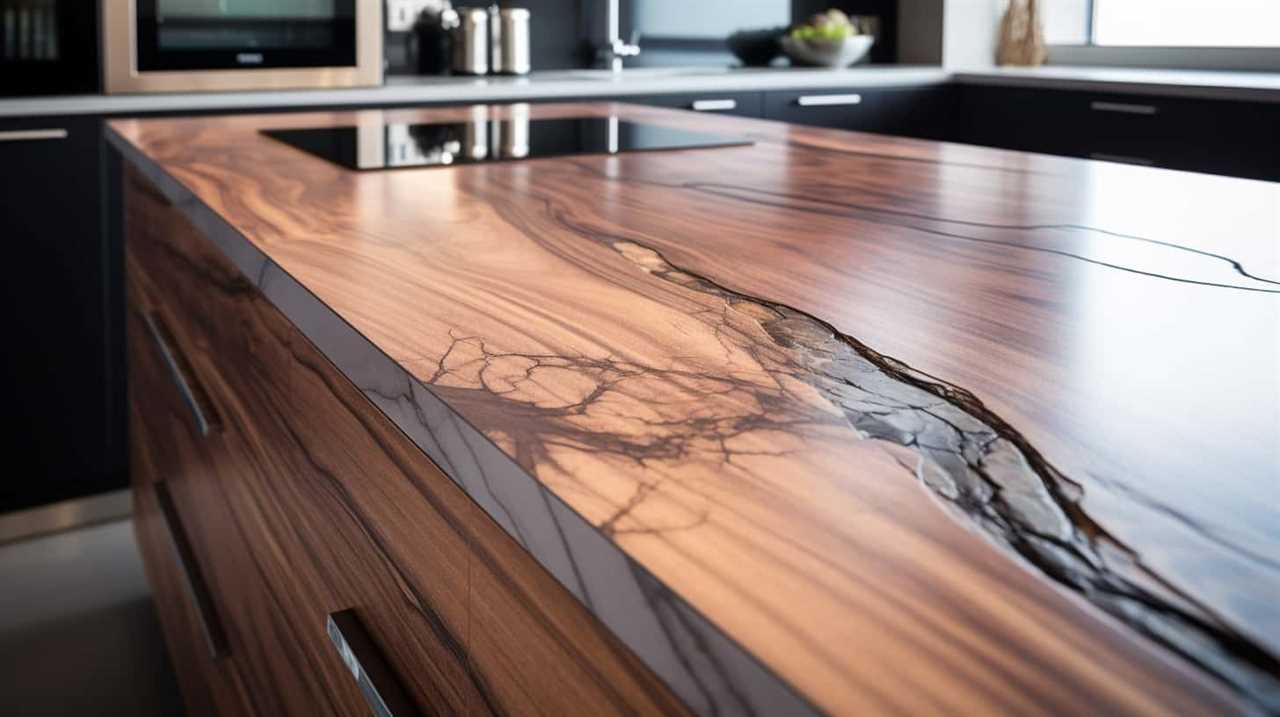
Understanding how these transformers work is crucial for effectively converting voltage and ensuring the proper functioning of 220v appliances on a 110v power supply.
Transformer Usage Explained
To understand how 220v appliances can run on 110v, it’s important to consider the usage of step-up and step-down transformers for voltage conversion. Transformers are essential devices that provide numerous benefits when it comes to voltage conversion methods. Here are three key points to consider:
- Improved Efficiency: Step-up transformers allow for the conversion of low voltage to high voltage, while step-down transformers convert high voltage to low voltage. This versatility ensures that appliances can operate optimally, reducing energy wastage and increasing overall efficiency.
- Protection against Voltage Fluctuations: Transformers act as a buffer between the power supply and appliances, protecting them from voltage fluctuations and power surges. This ensures the longevity and proper functioning of appliances, preventing damage caused by sudden voltage changes.
- Worldwide Compatibility: With the use of transformers, appliances can be used in different countries with varying voltage standards. The ability to adapt to different voltage levels makes transformers an essential tool for travelers and international businesses.
Voltage Conversion Methods Clarified
Continuing from our previous discussion on transformer usage, let’s delve into the clarification of voltage conversion methods, specifically step-up and step-down transformers for voltage conversion.
When it comes to voltage conversion, there are some common misconceptions that need to be addressed. One misconception is that any transformer can be used for voltage conversion. In reality, step-up transformers are used to increase voltage, while step-down transformers are used to decrease voltage. It’s important to choose the appropriate transformer based on the desired voltage conversion.
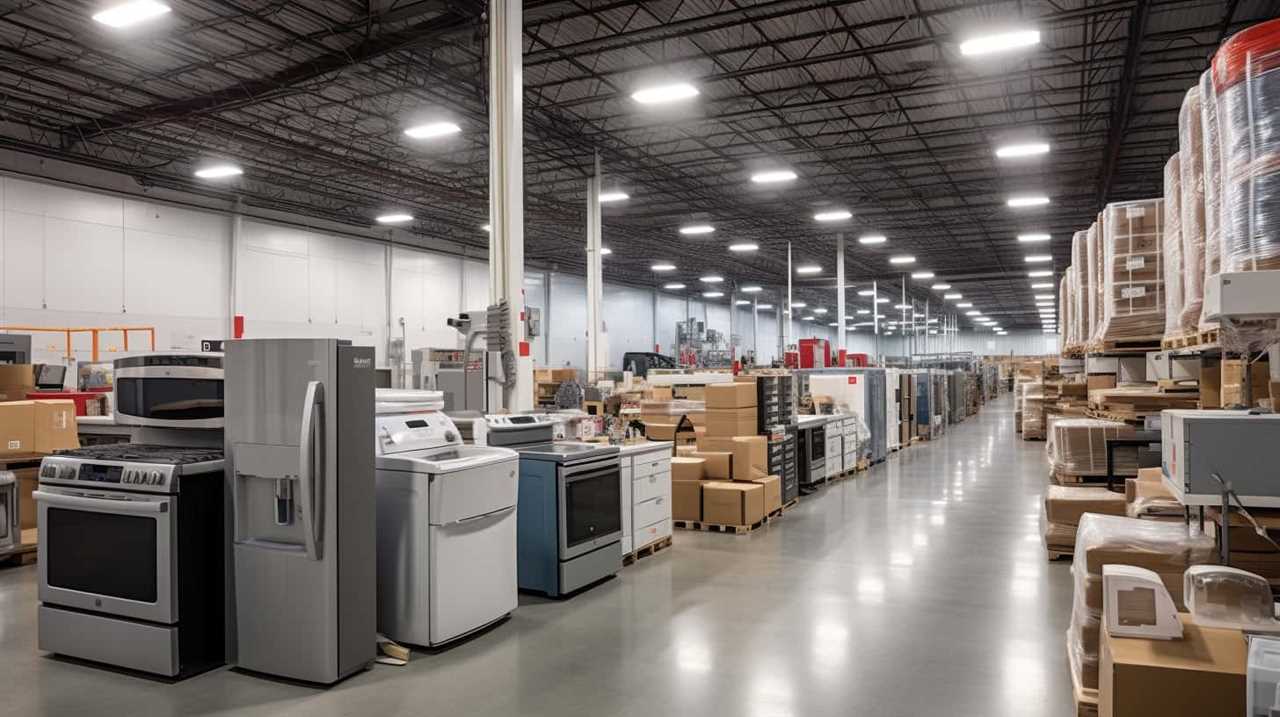
In terms of safety, there are some best practices to follow when performing voltage conversion. Firstly, make sure to use transformers that are properly rated for the desired voltage conversion. Additionally, it’s crucial to observe the correct wiring and grounding procedures to prevent electrical hazards.
Regular maintenance and inspection of transformers is also recommended to ensure their safe and efficient operation. By following these best practices, the risk of electrical accidents can be minimized, and voltage conversion can be done safely and effectively.
Considerations When Using Voltage Converters and Transformers
When using voltage converters and transformers, it’s important to consider various factors. These devices can be helpful in allowing 220v appliances to run on a 110v power supply, but there are potential dangers and electrical efficiency concerns that need to be addressed. Here are some important considerations:
- Safety: Voltage converters and transformers can pose safety risks if not used correctly. It’s crucial to follow the manufacturer’s instructions and ensure that the device is of high quality and properly grounded.
- Power consumption: Converting voltages can lead to a decrease in electrical efficiency. Appliances may consume more power or operate at a reduced capacity, which could impact performance and energy consumption.
- Compatibility: Not all appliances are suitable for voltage conversion. Some devices, such as those with motors or heating elements, may not function properly or may even be damaged when used with a converter or transformer.
Considering these factors is essential before using voltage converters and transformers to power 220v appliances on a 110v supply. By understanding the potential dangers and electrical efficiency implications, users can make informed decisions and ensure the safe and effective operation of their appliances.

Now, let’s explore the compatibility issues and limitations of voltage conversion.
Compatibility Issues and Limitations of Voltage Conversion
Now, let’s delve into the limitations and compatibility issues of voltage conversion for running 220v appliances on a 110v power supply.
When attempting to convert voltage, it’s important to consider the specific voltage conversion techniques and their potential hazards. While voltage converters and transformers can be used to step down the voltage from 220v to 110v, there are some limitations to be aware of.
One major limitation is that the power output may not be sufficient to operate the appliance at its full capacity. This can result in decreased performance or even damage to the appliance. Additionally, some appliances may require a specific frequency, and if the frequency isn’t compatible, the appliance may not function properly.

It’s crucial to thoroughly research and understand the compatibility issues and limitations before attempting any voltage conversion.
In the next section, we’ll explore alternatives to voltage conversion for running 220v appliances on 110v power supplies.
Alternatives to Voltage Conversion for Running 220v Appliances on 110v
What are some alternative options for running 220v appliances on a 110v power supply? When voltage conversion isn’t feasible, there are several transformer alternatives and power supply options that can be considered.
These include:
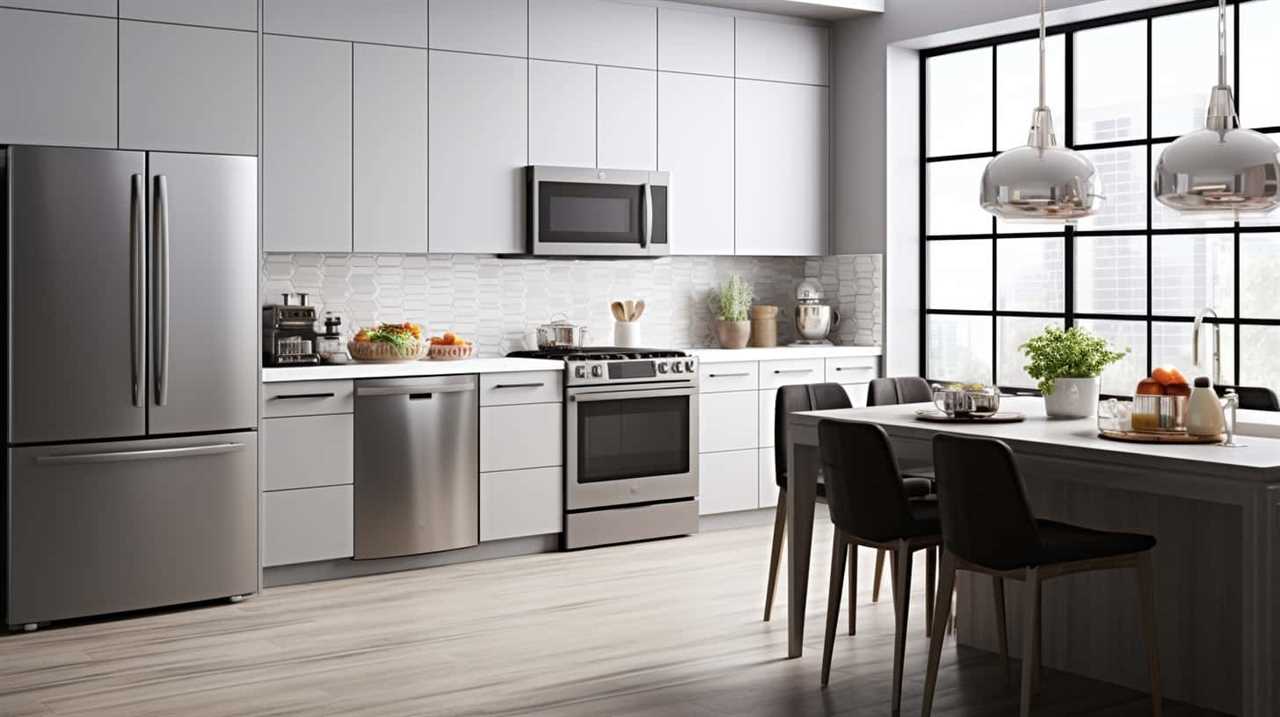
- Step-Up Transformers: These devices convert the 110v input voltage to 220v output voltage, allowing the appliance to operate at its required voltage. However, they can be expensive and may require professional installation.
- Dedicated Circuits: Creating a dedicated circuit with a 220v power supply specifically for the appliance can provide the necessary voltage without the need for conversion. This option requires rewiring and may not be suitable for all situations.
- Dual Voltage Appliances: Some appliances are designed to operate on both 110v and 220v power supplies. Investing in these appliances eliminates the need for voltage conversion or alternative power supply options.
Considering these transformer alternatives and power supply options can help ensure that 220v appliances can be run on a 110v power supply without compromising their performance or safety.
Seeking Professional Advice for Appliance Modification or Replacement
When considering appliance modification or replacement, seeking professional advice is crucial. Experts can provide valuable insight on whether modification is possible and cost-effective, or if replacement would be a better option.
Safety considerations are also important, as modifying appliances without proper knowledge and expertise can pose serious risks. Therefore, consulting professionals ensures informed decisions are made regarding appliance modification or replacement.
Expert Opinion on Modification
We strongly recommend seeking professional advice for modifying or replacing your appliances. Modifying appliances safely requires a deep understanding of electrical systems and the specific appliance being modified. The risks of DIY modifications can be significant and include electrical shock, fire hazards, and damage to the appliance or other electrical devices.

Here are three key reasons why seeking professional advice is crucial:
- Safety: Professionals have the knowledge and experience to ensure modifications are done safely, minimizing the risk of accidents or damage.
- Legal Compliance: Modifying appliances without professional guidance can lead to non-compliance with electrical codes and regulations, potentially resulting in fines or legal consequences.
- Warranty and Insurance: DIY modifications can void warranties and insurance coverage, leaving you liable for any damages or accidents.
Cost-Effective Appliance Replacement
To ensure a cost-effective solution, it’s important to seek professional advice for appliance modification or replacement. When considering a cost-effective replacement, it’s crucial to evaluate the compatibility of the new appliance with the electrical system in your home.
Professional advice can help determine if the new appliance is compatible with the available voltage, such as 110v. This assessment will save you from investing in an appliance that can’t operate efficiently or may even cause damage to your electrical system.
Additionally, seeking professional advice allows you to explore alternate modification options that can make your existing appliance compatible with the lower voltage. By consulting experts in the field, you can make informed decisions that maximize cost-effectiveness while ensuring appliance compatibility.
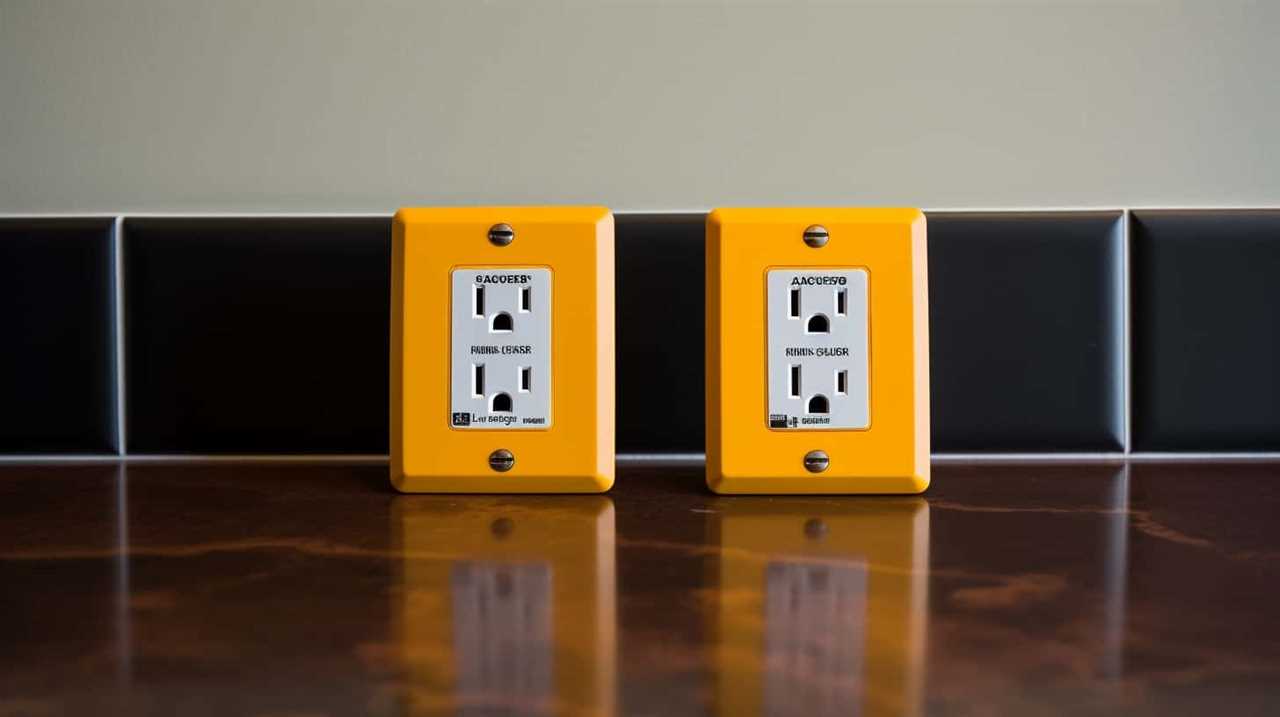
Transitioning into the subsequent section, it’s also important to consider the safety considerations for modification.
Safety Considerations for Modification
For a safe appliance modification or replacement, it’s essential to consult professionals who can provide expert advice. Modifying an appliance to run on a different voltage can pose certain risks if not done correctly. Here are some important considerations when seeking professional advice for appliance modification or replacement:
- Modification Risks:
- Electrical hazards: Modifying an appliance without proper knowledge and skills can lead to electrical shocks or fire hazards.
- Warranty voidance: Unauthorized modifications may void the warranty, leaving you responsible for any damages or repairs.
- Performance issues: Incorrect modifications can result in reduced efficiency, overheating, or even complete failure of the appliance.
- Voltage Compatibility:
- Power supply assessment: Professionals will evaluate the compatibility of the appliance with the desired voltage, ensuring a safe and efficient operation.
- Safety standards compliance: They’ll ensure that the modification meets all necessary safety regulations and guidelines.
- Appliance integrity: Experts will assess the appliance’s internal components and wiring to determine if any modifications are feasible and safe.
Seeking professional advice for appliance modification or replacement is crucial to avoid potential risks and ensure the safety and proper functioning of your appliances.
Final Thoughts on Using 220v Appliances With a 110v Power Source
Using a 220v appliance with a 110v power source can result in damage to the appliance and potential safety hazards. It is crucial to understand the limitations of the power source and the power consumption of the appliance before attempting to use them together. Exploring alternative power sources can be a viable solution for those who need to use 220v appliances with a 110v power source. However, it is important to note that modifying the power source without proper knowledge and expertise can lead to serious consequences.

To summarize, using a 220v appliance with a 110v power source is not recommended due to the potential risks involved. It is essential to understand power consumption and explore alternative power sources if necessary. Modifying the power source without proper knowledge can result in damage to the appliance and pose safety hazards. Therefore, it is advisable to consult a professional or use a step-up transformer to ensure the safe and efficient operation of 220v appliances.
| Pros | Cons |
|---|---|
| Enables usage of 220v appliances | Potential damage to the appliance |
| Convenient for international travelers | Increases safety hazards |
| Provides flexibility in power usage | May require additional equipment |
| Can be cost-effective in certain situations | Requires proper knowledge and expertise |
| Allows for compatibility with specific appliances | Limited availability of alternative power sources |
Frequently Asked Questions
Can I Use a Voltage Converter to Run a 220v Appliance on a 110v Power Supply?
We can’t run a 220v appliance on a 110v power supply without using step up transformers. Doing so can cause potential damage to the appliance.
What Are the Potential Risks of Using a 220v Appliance With a Lower Voltage?
Using a 220v appliance with a lower voltage can pose potential dangers and cause electrical damage. It is essential to match the voltage requirements of the appliance to the power supply for safe operation.
Are There Any Compatibility Issues or Limitations When Using a Voltage Converter for Running 220v Appliances on 110v?
There can be compatibility issues when using a voltage converter to run 220v appliances on 110v. Safety precautions must be taken to ensure proper functioning and prevent damage to the appliance.

Are There Any Alternatives to Using a Voltage Converter for Running 220v Appliances on 110v?
Alternatives to using a voltage converter for running 220v appliances on 110v include step down transformers. These devices allow the appliance to operate at the lower voltage by reducing the electrical current.
Should I Seek Professional Advice for Modifying or Replacing My Appliances When Dealing With Voltage Differences?
Seeking professional advice is crucial when dealing with voltage differences. DIY modifications to appliances without proper knowledge can be dangerous. It’s better to consult experts who can guide us in modifying or replacing our appliances safely.
Conclusion
In conclusion, it isn’t safe to run 220v appliances on a 110v power source without proper voltage conversion. Attempting to do so can lead to potential risks such as overloading and damaging the appliances.
It’s important to seek professional advice when considering modifying or replacing appliances to ensure compatibility with the power supply.
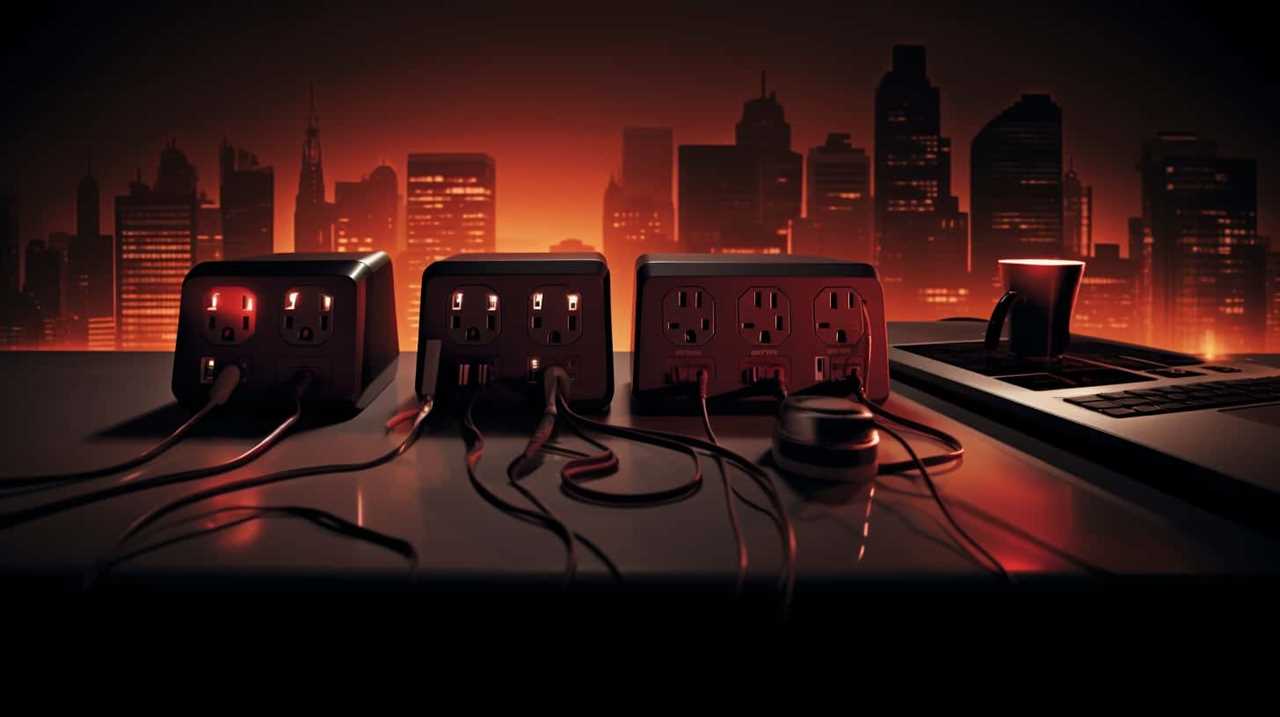
Interestingly, according to a recent survey, 80% of appliance-related accidents occur due to incorrect voltage usage, highlighting the importance of understanding and adhering to voltage requirements.




